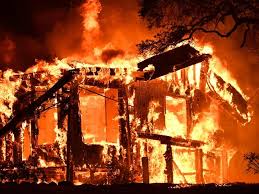
October 18, 2017 at 4:25 pm · K P Lanthier · Comments Off on Traumatized by Media Exposure – Part I
Traumatized by Media Exposure – Part I
Dr. K. P. Lanthier, C.Psych.
Recently the world has been inundated with tragedy, after tragedy, after tragedy. Climate and weather disasters have hit nearly every part of the world. For instance, there have been monsoons and flooding in South Asia, landslides in Africa, with 117 deaths in Zimbawee, severe floods have taken the lives of 144 deaths in China and millions displaced, 150 deaths in Peru from flooding, 156 deaths in Afghanistan from avalanches, in the Congo 174 deaths due to landslides and 213 deaths in Sri Lanka from excessive rainfall. In Mexico there was a 7.1 magnitude earthquake causing 225+ deaths in its wake. A total of 300+ dead in Columbia due to heavy rainfall and massive landslides. 600+ human loss in Sierra Leone from flooding and mudslides. The death toll in South Asia (Bangladesh, India, Nepal) experienced 1,200 perished due to flooding and landslides. We’ve witnessed how hurricanes Harvey, Irma, Maria, Jose, and Katia have left its citizens without water, food, and shelter. The tragedy in a Rehabilitation Center in Florida after hurricane Irma made breaking news. Most recently, there have been daily coverage of the California Wildfires. It’s difficult to remain untouched by these natural disasters that have plummeted our planet. We witness the devastations in real time on our television sets. We get to know the people who are suffering as if they were our neighbor. How do we recover from hearing about the 12 elderly victims that died due to failed electricity after Hurricane Irma?
We have witnessed in the media the outpouring of help and aid to those that have lost everything. These kinds of tragedies tend to bring out the best in humankind. Strangers lend a hand without thinking of the cost or risk. Daily news coverage of natural disasters can begin to drain our physical well-being. We may begin to experience compassion fatigue, vicarious trauma or an acute stress reaction.
An acute stress reaction is a condition that can develop after exposure to a stressful event. The symptoms usually subside within hours or days after the event. Along with natural disasters, serious accidents, violent assaults, rape, childhood sexualized assault and terrorist incidents can all trigger an acute stress reaction. The immediate and enduring impacts of natural disasters such as Hurricane Harvey, Irma and Maria have taken over media channels over the past months. Most recently, we learn the death toll rises to 40 as the California Wildfires rage on.
As we face the devastation left by natural disasters we can begin to feel grief stricken, numb and disconnected. We may feel we have little control over our lives. We may begin to have poor sleep, experience nightmares, difficulty concentrating, altered eating habits or even engage in risky behavior. If you notice experiencing these symptoms it’s time to make a change. Perhaps, reduce your amount of exposure to the media. Take a “stay-cation” by visiting friends, do something fun, read a good book, watch comedy, get physically active. Sometimes it will take more to get you back on track. Do not hesitate, to seek professional help that can offer a safe space to share your doubts, fears and worries. You will be able to express your thoughts freely without judgement. If you need help processing your thoughts and resolving vicarious trauma, call today at 296-7288. Click here to read Part II, that covers the media coverage of terrorist attacks in 2016/2017 and Acute Stress Disorder.
